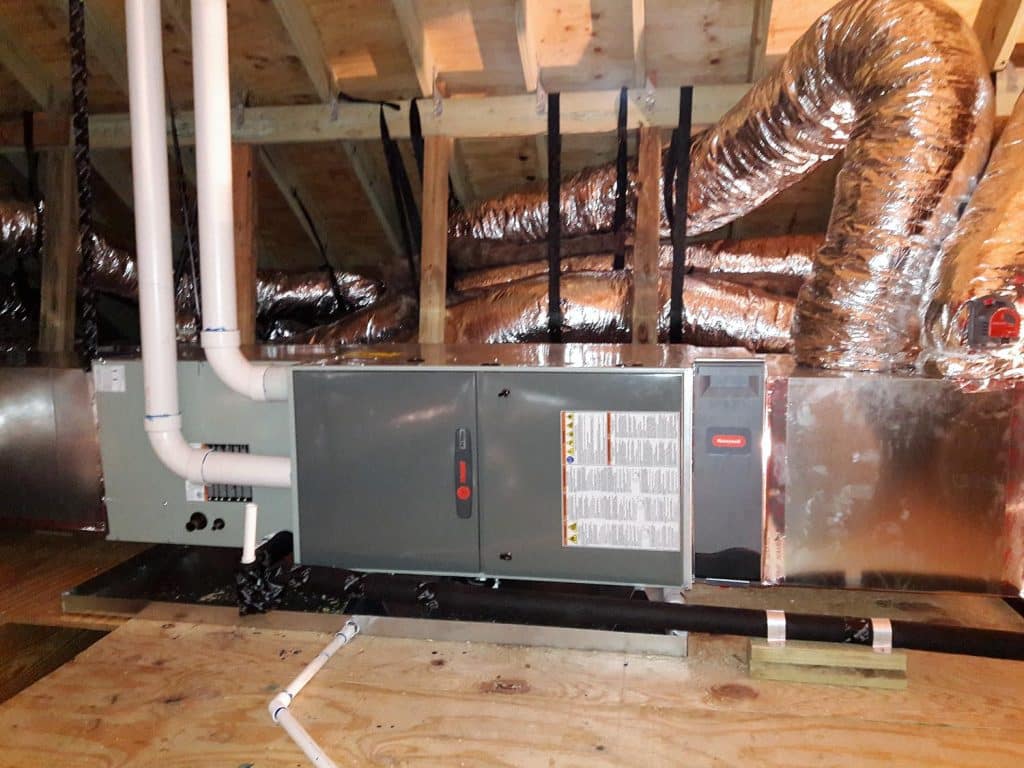Safeguarding the performance and air quality of your HVAC system hinges on regular maintenance and cleaning. This holds true not just for efficiency but also for the health of you and your loved ones. If you’re an owner of a Trane air handler and seek effective cleaning guidance, you’re in the right place. This article presents a comprehensive step-by-step manual for cleaning your Trane air handler, emphasizes the significance of routine upkeep, addresses common problems, and furnishes pointers to elongate your air handling unit’s lifespan.
Thoroughly Cleansing Your Trane Air Handler: A Stepwise Walkthrough

Ensure the peak performance of your Trane air handler by following these stages of cleaning:
- Shutdown Procedure: Prioritize safety by switching off the unit and disconnecting its power source.
- Drain Pipe Detachment: Gently disconnect drain pipes from the air handler to access its components conveniently.
- Extracting Coils and Fan: Carefully dismantle the air handler’s coils and fan from their mounts, enabling meticulous cleaning.
- Eliminating Dust and Grime: Employ a shop vacuum to eliminate dust and grime from the air handler housing, establishing a pristine surface for further cleaning.
- Application of Antibacterial Solution: Administer an antibacterial solution to cleanse coils and the fan, allowing it to stand until they whiten.
- Thorough Rinsing: After the solution takes effect, employ a garden hose to eliminate loosened debris from coils and the fan.
- Thorough Drain Line Cleaning: Pay attention to the drain line, ensuring unobstructed flow.
- Reassembly of Components: After cleaning, reassemble the air handler by reinstating coils and the fan, and reattaching drain pipes.
The Significance Of Air Handler Cleaning
Air handlers tend to accumulate dust and particles over time. This buildup can force the system to work harder, affecting air quality and potentially shortening your HVAC system’s lifespan. Keep a lookout for signals indicating your air handler requires cleaning to preserve optimal performance.
Indicators Of A Dirty Air Handler
- Visible mold or mildew on external vents.
- Dust and dirt accumulation on the filter.
- Generation of warm air instead of cool air.
- Unusual noises emitting from the unit.
- Unpleasant odors emanating from the unit.
- More than a year has passed since the last cleaning.
Air Handler Upkeep Checklist
Trane advises HVAC technicians to perform these maintenance tasks during service checks for flawless air handler operation:

- Cleaning fan blades and eliminating dust.
- Inspection for cracks or excessive wear on moving parts.
- Verification of fan RPM within design limits.
- Tightening set screws on the fan shaft.
- Cleansing dampers of grime.
- Checking damper actuators and linkages.
- Lubricating mechanical connections and dampers.
- Cleaning coils.
- Examination of refrigerant lines, coils, valves, and fittings for leaks.
- Inspection of condensation pans and drains for rust.
- Assessment of belts for wear and cracks.
- Precise alignment of rigid couplings.
- Draining and drying cooling coils.
- Ensuring correct freeze stat settings.
- Comprehensive system vacuuming.
Solving Common Air Handler Problems
Swiftly addressing prevalent air handler issues can forestall further complications. Here’s how to troubleshoot some of these problems:
- Insufficient Heating or Cooling:
- Clean or replace clogged air filters.
- Examine and clear supply registers and return grills.
- Remove debris from the outdoor coil.
2. Failure to Operate:
- Confirm the main switch is on.
- Reset the circuit breaker or replace blown fuses.
- Validate the thermostat settings.
3. Unusual Sounds:
- Alert an HVAC technician promptly.
4. Blower Motor Dysfunction:
- Substitute the blower motor if necessary.
Thorough Drain Maintenance
Routine maintenance encompasses inspecting the condensate drain. Accumulated sludge from condensation can obstruct the drain over time. Refer to relevant resources for detailed drain line cleaning instructions.
Cleaning Air Filters
Air filters play a pivotal role in upholding indoor air quality. To clean washable filters, turn off power, remove the filter, brush and rinse it. If necessary, wash the frame with warm water and dishwashing liquid, rinse, dry, and reinstall.

Determining Air Filter Replacement Time
For non-washable filters, replacement becomes imperative. Identify the air handler filter location, remove the old filter, and insert a new one with airflow direction arrows.
Tips For Extending Air Handler Longevity
To ensure your air handler’s durability, consider these tips:
- Adjust the thermostat when away or during mild weather.
- Regularly change filters to prevent debris accumulation.
- Arrange annual maintenance services.
In Conclusion
Maintaining and cleaning your Trane air handler are vital actions for peak performance, energy efficiency, and indoor air quality. By adhering to the steps delineated in this guide, you can ensure the smooth operation and prolonged lifespan of your air handling unit. Regular maintenance and timely issue resolution can spare you from expensive repairs and replacements down the line, fostering a comfortable and healthful living space. Remember, if you encounter challenges or unusual signs, consulting a qualified HVAC technician is the best course of action.






GIPHY App Key not set. Please check settings